• Gait is variably antalgic with a universal external foot progression angle component. • Passive hip range of motion reveals a decrease in flexion and internal rotation, with variable reduction in abduction. • In moderate and severe SCFE, terminal flexion is coupled with obligate external rotation (as a result of anterior neck impingement).
Percutaneous in situ Cannulated Screw Fixation of Slipped Capital Femoral Epiphysis
Examination/Imaging
 Symptoms and physical findings vary according to the stability of the physis, chronicity of presentation, and severity of the slip.
Symptoms and physical findings vary according to the stability of the physis, chronicity of presentation, and severity of the slip.
 In the acute and unstable scenario, the patient holds the leg in an externally rotated position on the stretcher and will not tolerate active or passive range of motion and is unable to bear weight on the affected extremity.
In the acute and unstable scenario, the patient holds the leg in an externally rotated position on the stretcher and will not tolerate active or passive range of motion and is unable to bear weight on the affected extremity.
 Patients with stable SCFE exhibit a spectrum of clinical findings.
Patients with stable SCFE exhibit a spectrum of clinical findings.
 Both anteroposterior (AP) and lateral radiographs are essential for diagnosis. Slips first displace posteriorly, where the AP radiographic findings may be subtle. A line drawn tangential to the superior femoral neck on the AP radiograph (Klein’s line) will intersect a smaller portion of the capital epiphysis (Fig. 1A) or not intersect at all (Trethowan’s sign; Fig. 1B) compared to the uninvolved hip.
Both anteroposterior (AP) and lateral radiographs are essential for diagnosis. Slips first displace posteriorly, where the AP radiographic findings may be subtle. A line drawn tangential to the superior femoral neck on the AP radiograph (Klein’s line) will intersect a smaller portion of the capital epiphysis (Fig. 1A) or not intersect at all (Trethowan’s sign; Fig. 1B) compared to the uninvolved hip.
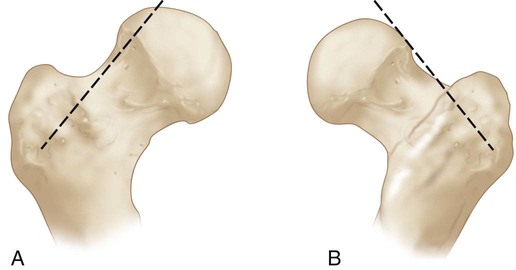
 Southwick classified the degree of slippage by measuring the femoral head-shaft angle on the AP (Fig. 2A) or frog-leg lateral (Fig. 2B) view.
Southwick classified the degree of slippage by measuring the femoral head-shaft angle on the AP (Fig. 2A) or frog-leg lateral (Fig. 2B) view.
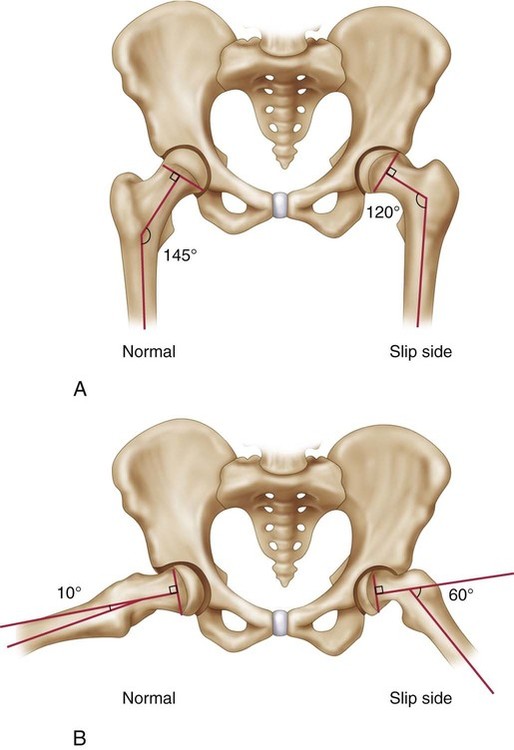
 Radiographic examination of the contralateral hip in AP (Fig. 3) and frog-leg lateral (Fig. 4) views at the time of surgery is critical as the incidence of bilateral involvement at initial presentation is at least 25%.
Radiographic examination of the contralateral hip in AP (Fig. 3) and frog-leg lateral (Fig. 4) views at the time of surgery is critical as the incidence of bilateral involvement at initial presentation is at least 25%.
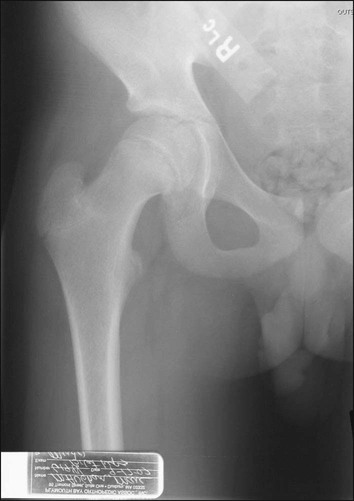
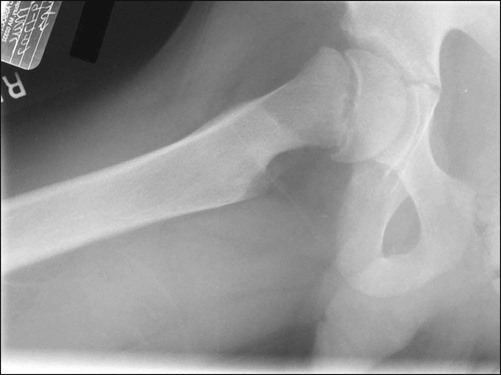
 Three-dimensional computed tomography scanning is a useful in assessment of deformity of the proximal femur and acetabulum in the setting of SCFE.
Three-dimensional computed tomography scanning is a useful in assessment of deformity of the proximal femur and acetabulum in the setting of SCFE.
Surgical Anatomy
 The capital epiphysis always slips in a posterior direction as the neck moves anteriorly and the femur externally rotates. Vascular structures in the femoral head and neck are shown in Figure 5.
The capital epiphysis always slips in a posterior direction as the neck moves anteriorly and the femur externally rotates. Vascular structures in the femoral head and neck are shown in Figure 5.

 The correct screw placement for in situ pinning occurs at the anterior capsular junction of the femoral neck at or proximal to the intertrochanteric line.
The correct screw placement for in situ pinning occurs at the anterior capsular junction of the femoral neck at or proximal to the intertrochanteric line.
 Hemorrhage associated with unstable SCFE may increase intracapsular pressure and necessitate arthrotomy of the anterior capsule to decrease the rate of AVN.
Hemorrhage associated with unstable SCFE may increase intracapsular pressure and necessitate arthrotomy of the anterior capsule to decrease the rate of AVN.
Positioning
 The position of choice is supine on a radiolucent operating table.
The position of choice is supine on a radiolucent operating table.
 Great care must be taken to position the patient with an unstable slip.
Great care must be taken to position the patient with an unstable slip.
 Once on the fracture table, position the ipsilateral arm across the body to give the C-arm the greatest space for operation (Fig. 6A–C).
Once on the fracture table, position the ipsilateral arm across the body to give the C-arm the greatest space for operation (Fig. 6A–C).
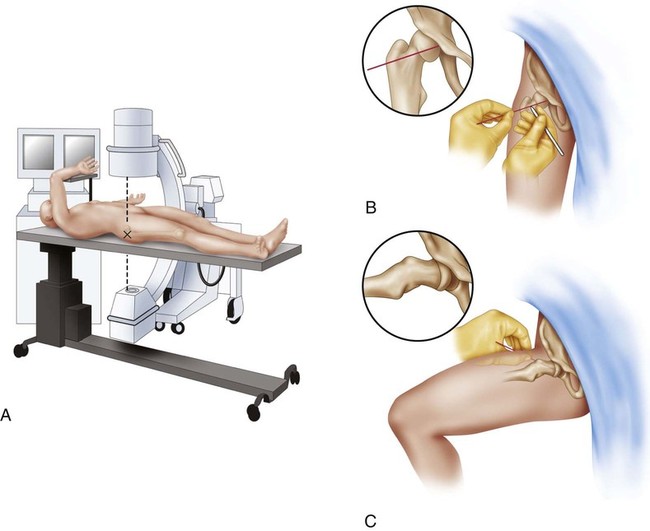
 An experienced radiographer controlling the C-arm is vital to obtaining well-penetrated orthogonal images.
An experienced radiographer controlling the C-arm is vital to obtaining well-penetrated orthogonal images.
18: Percutaneous in situ Cannulated Screw Fixation of Slipped Capital Femoral Epiphysis








